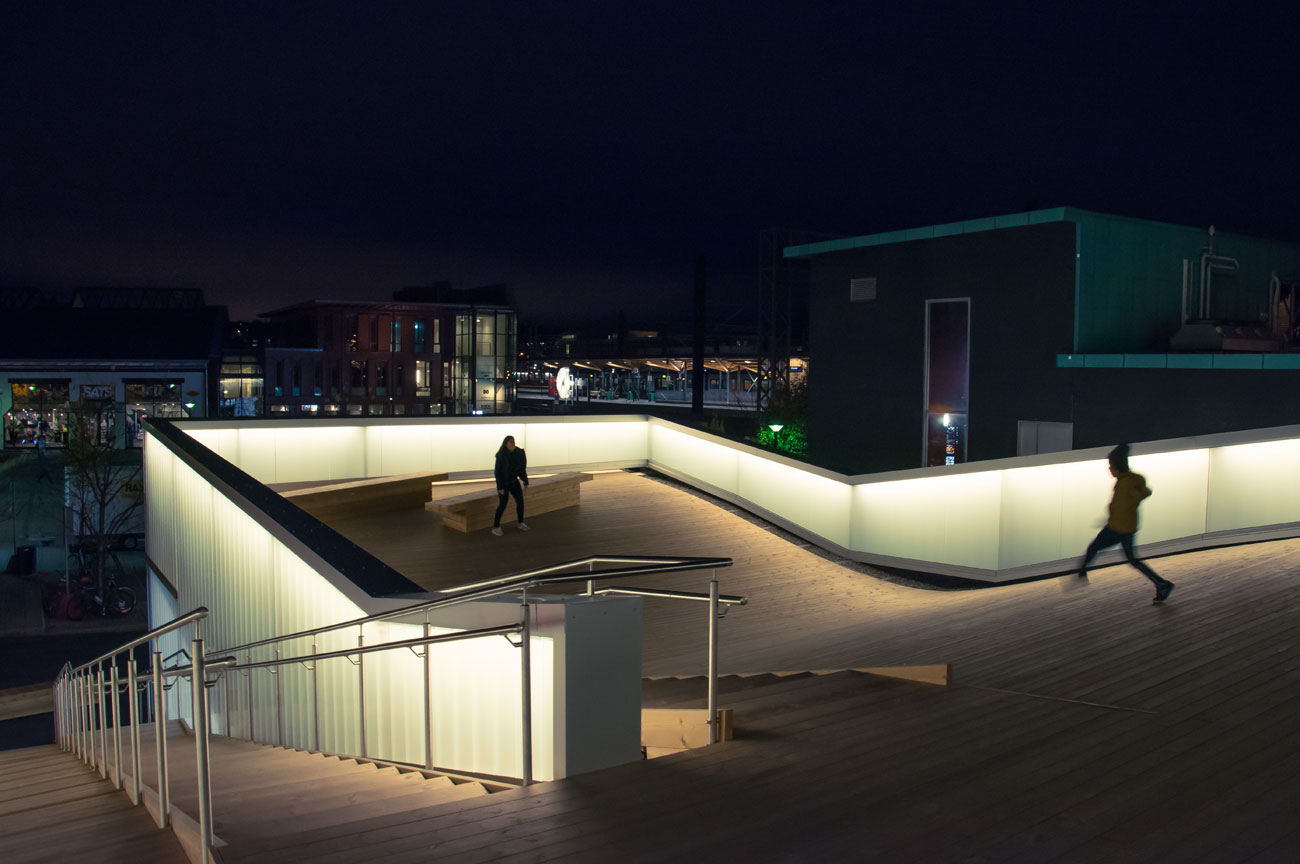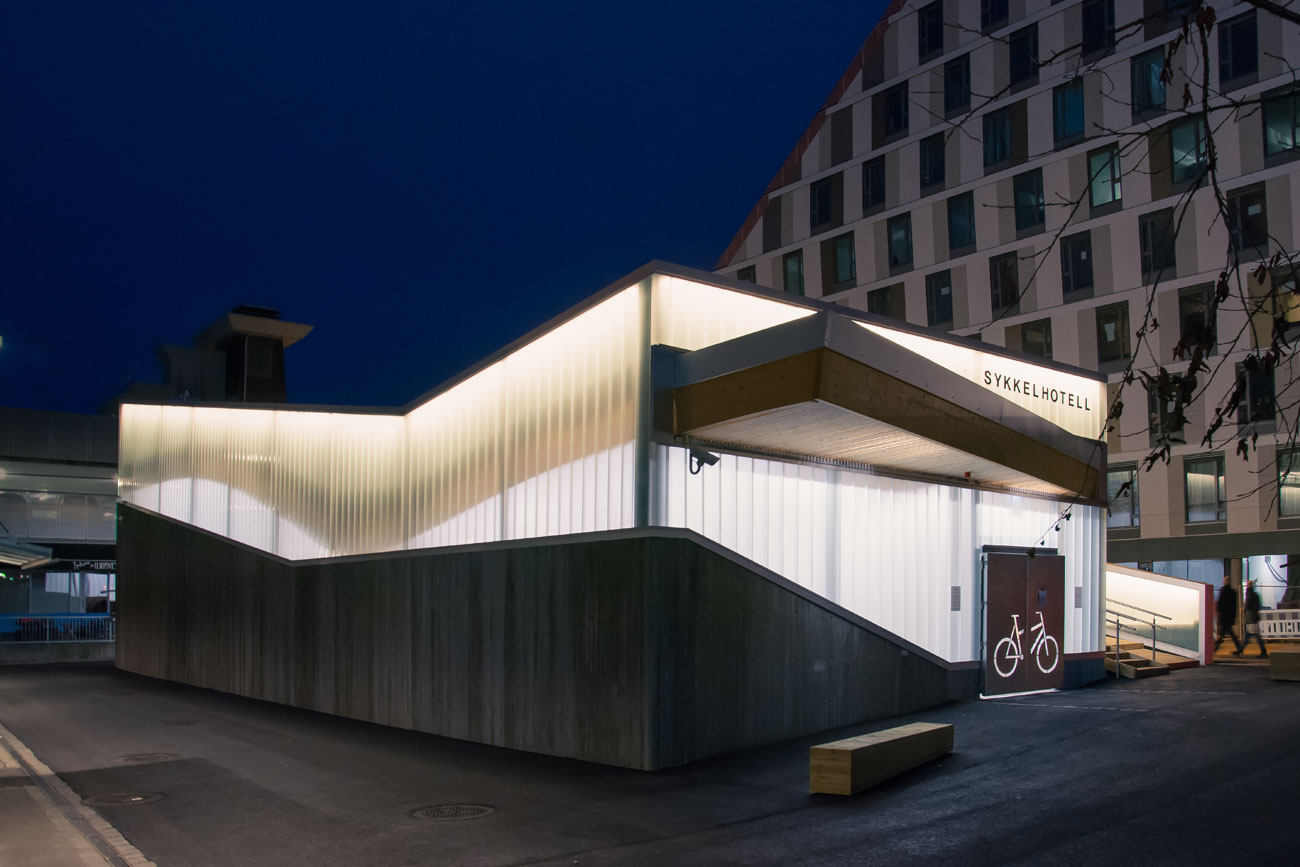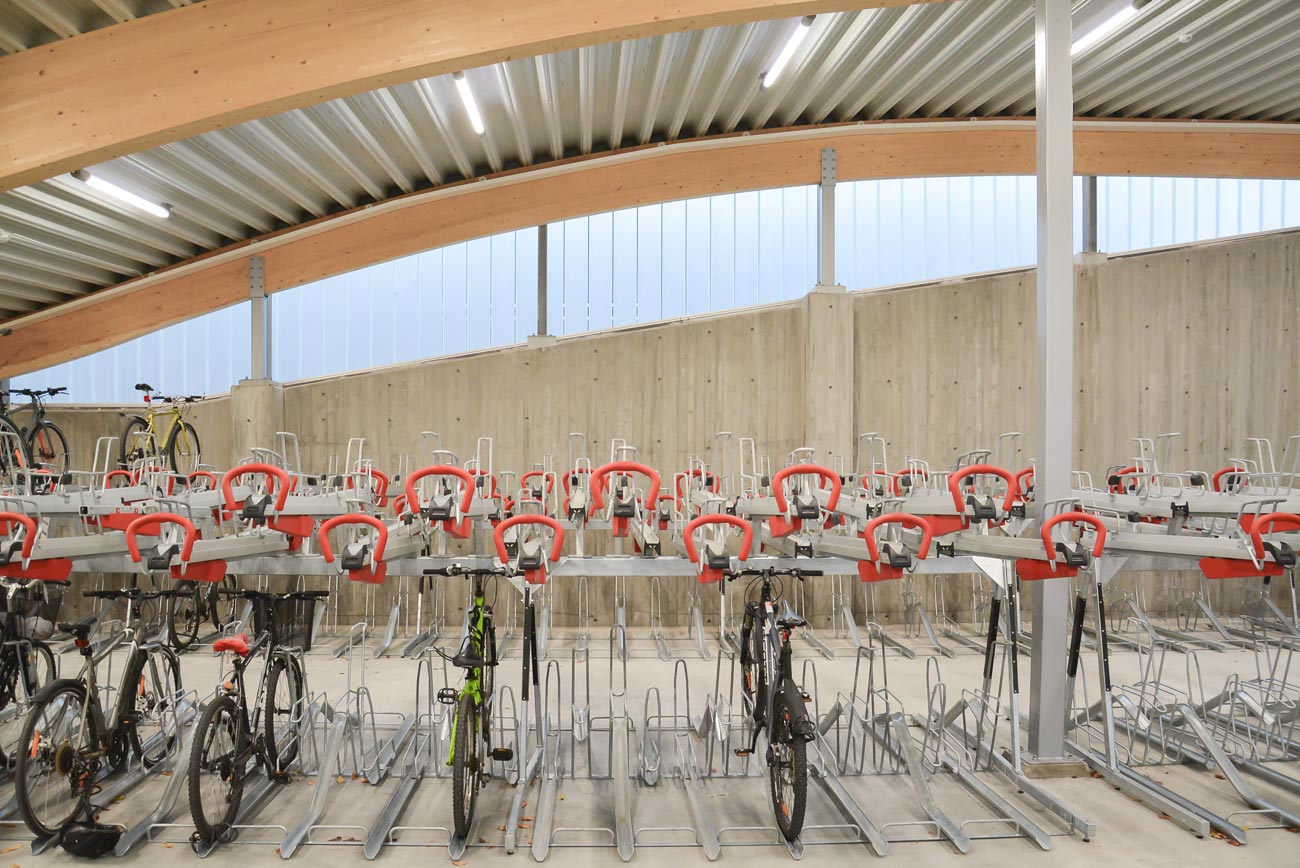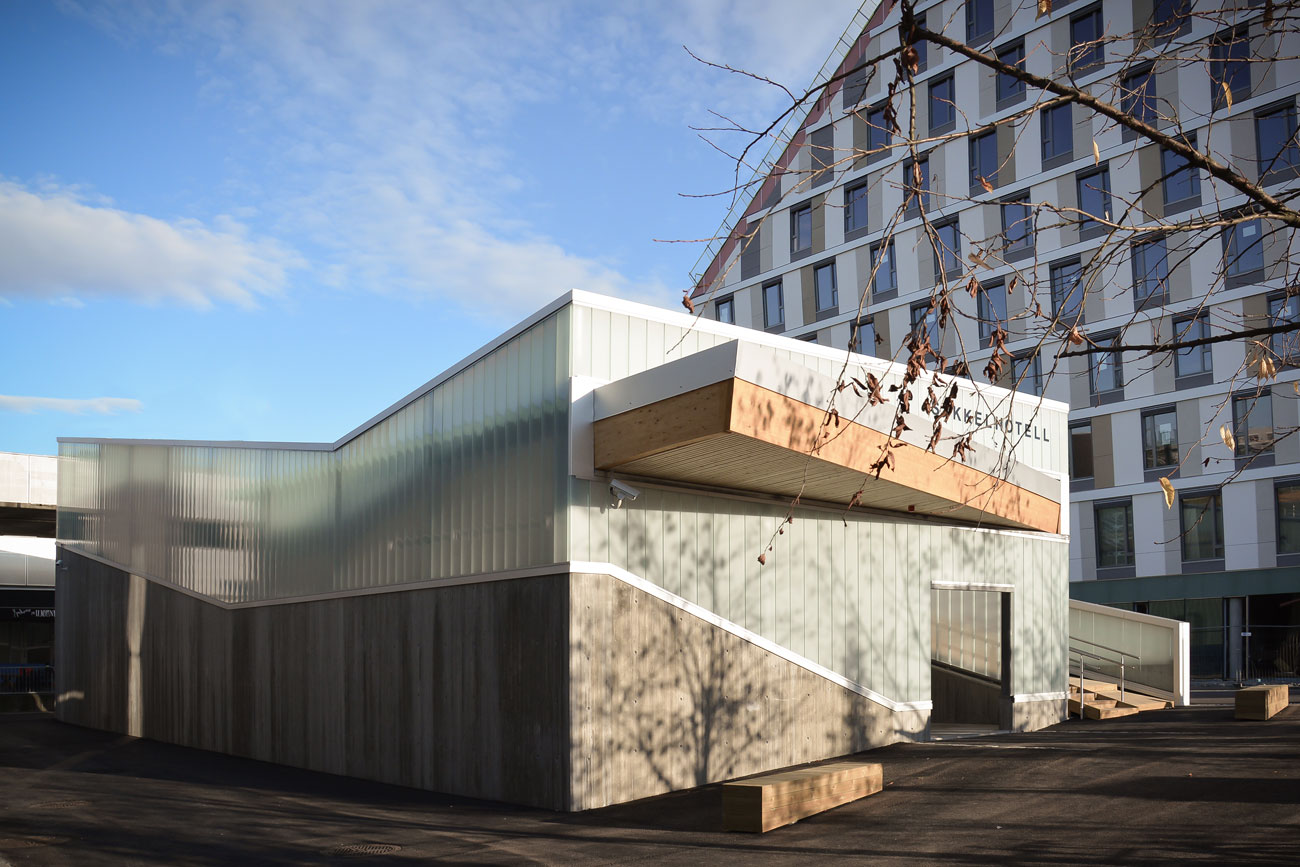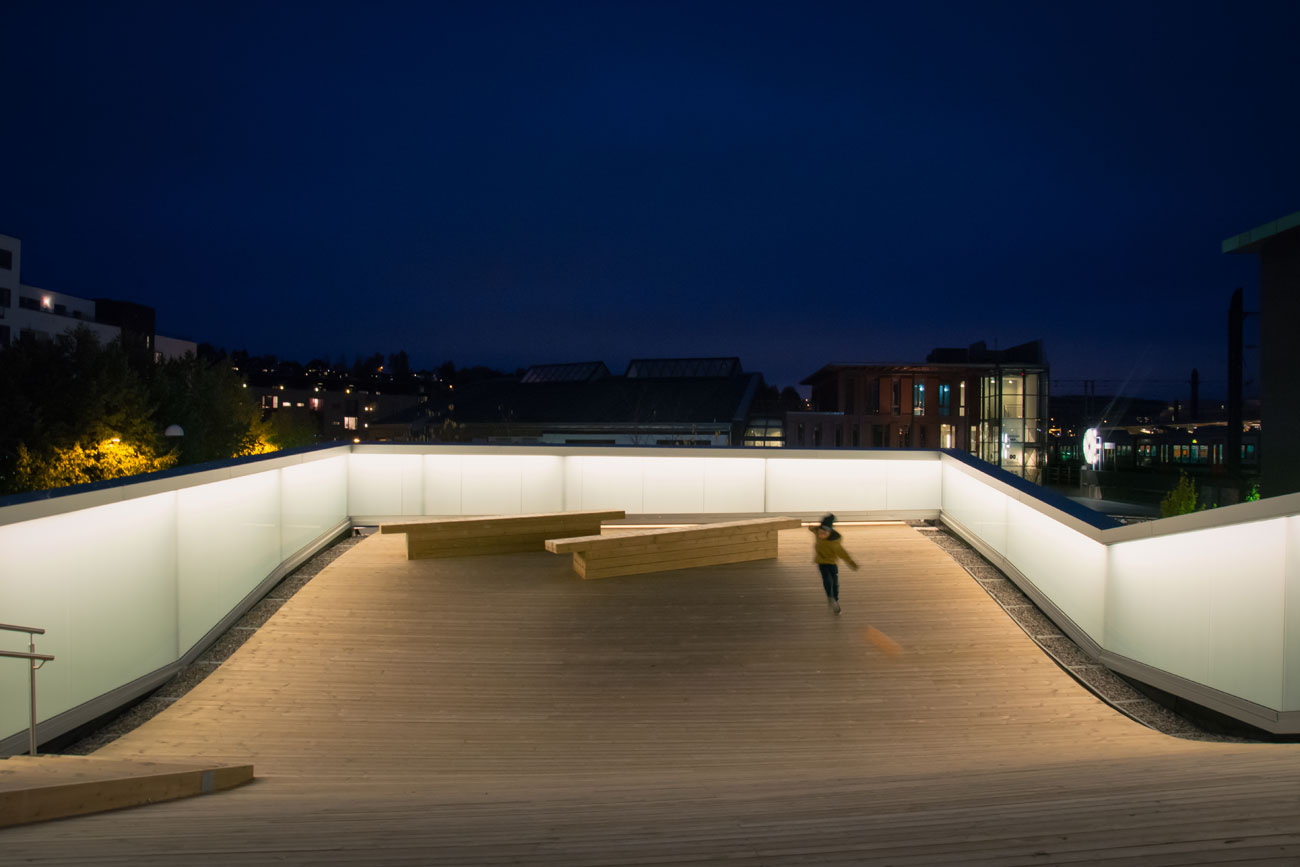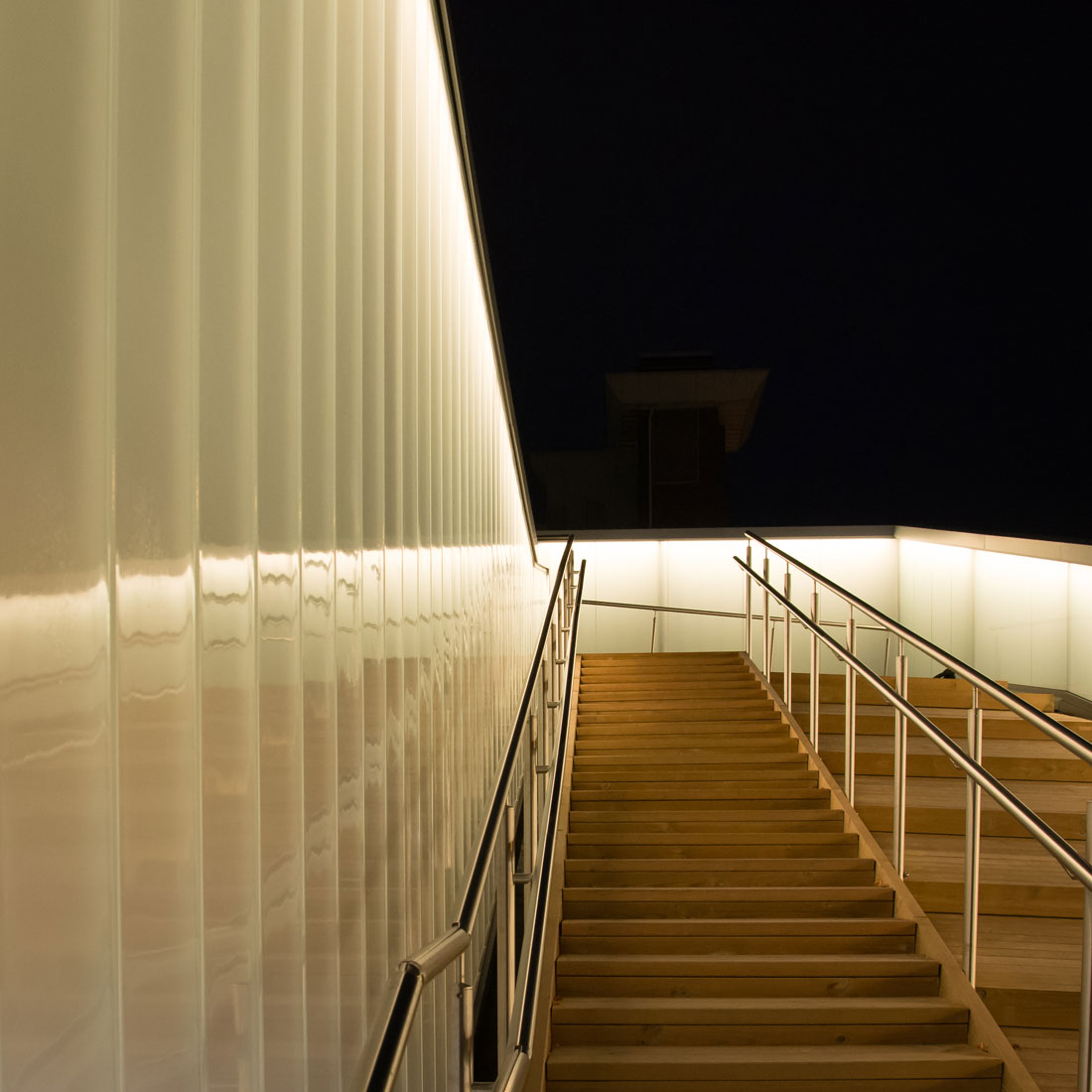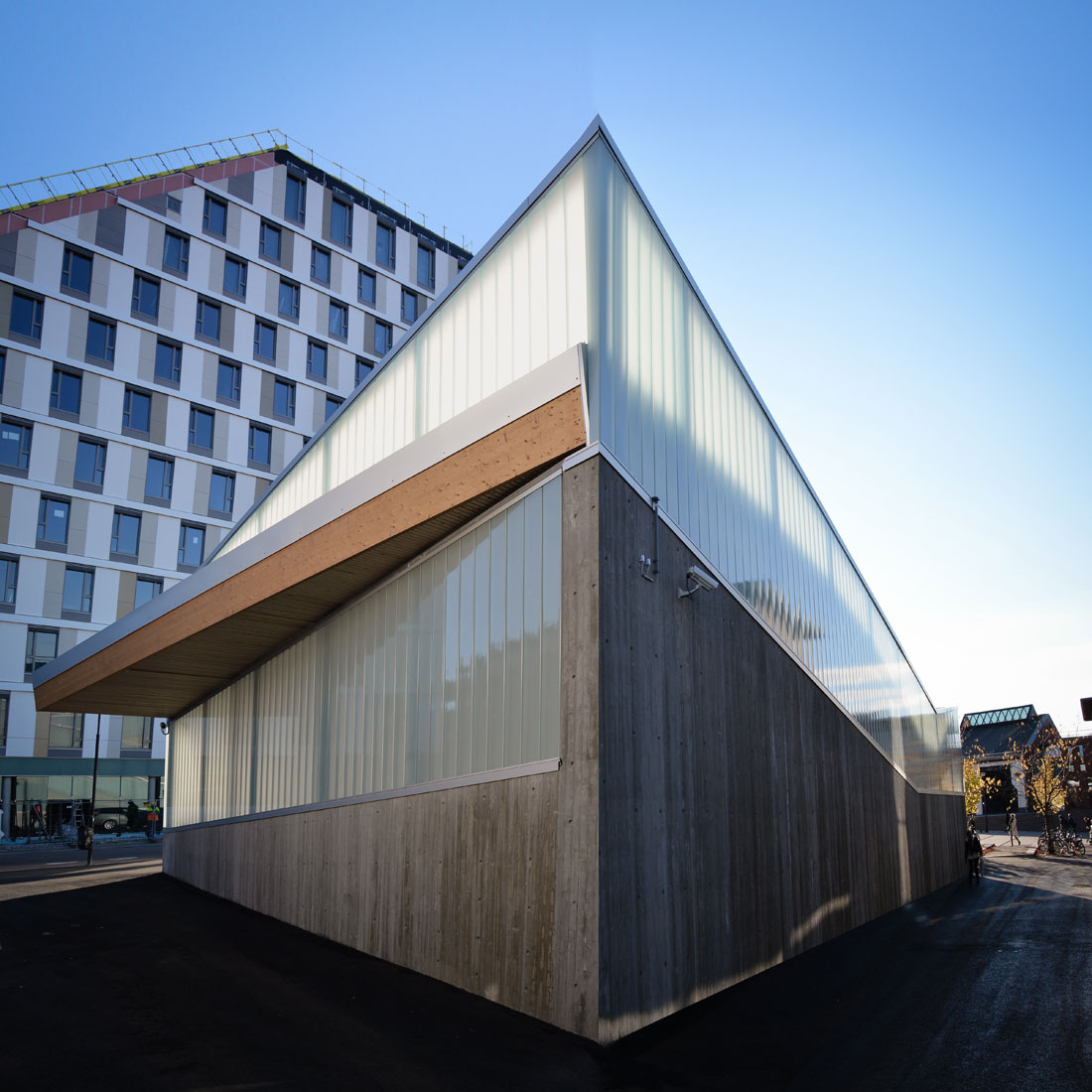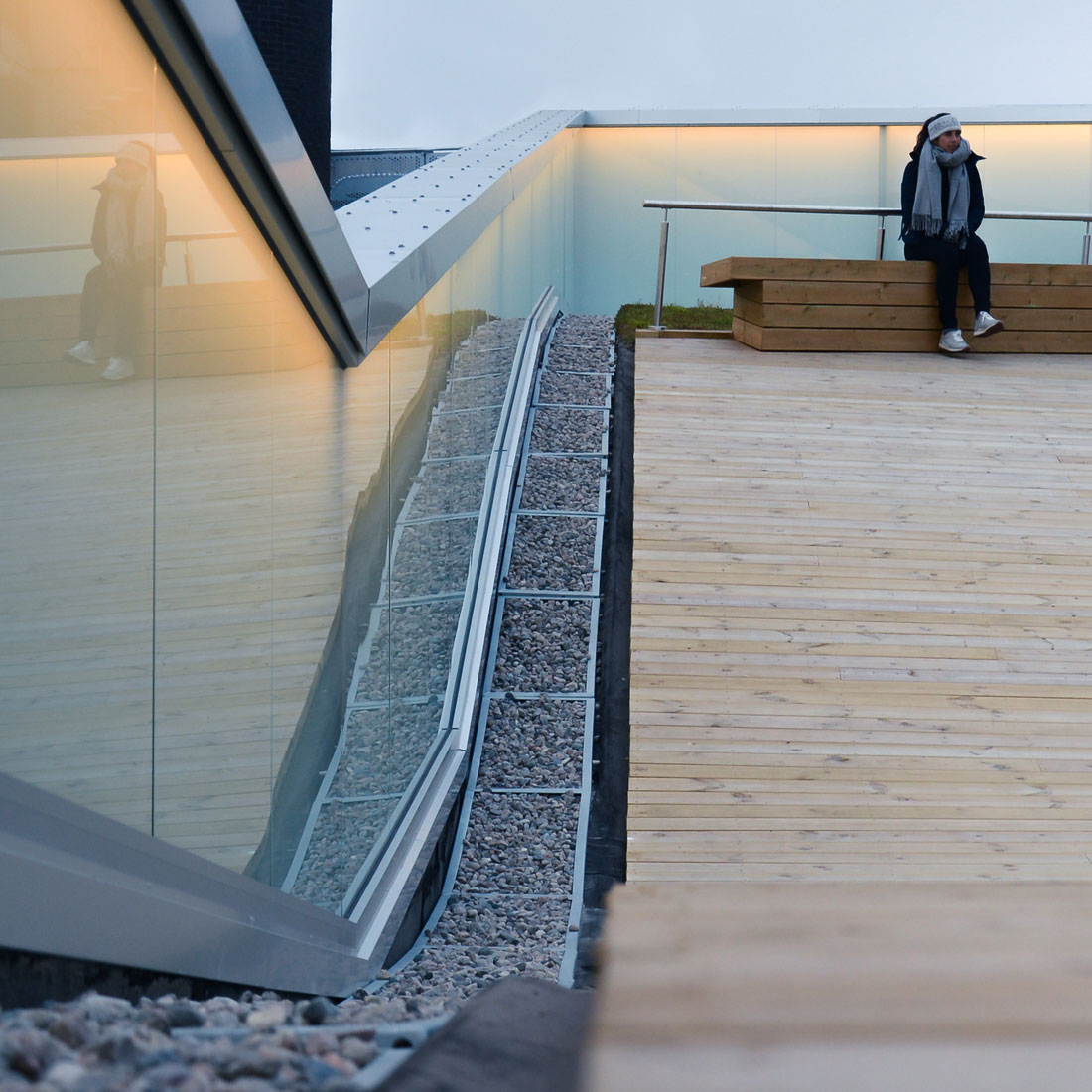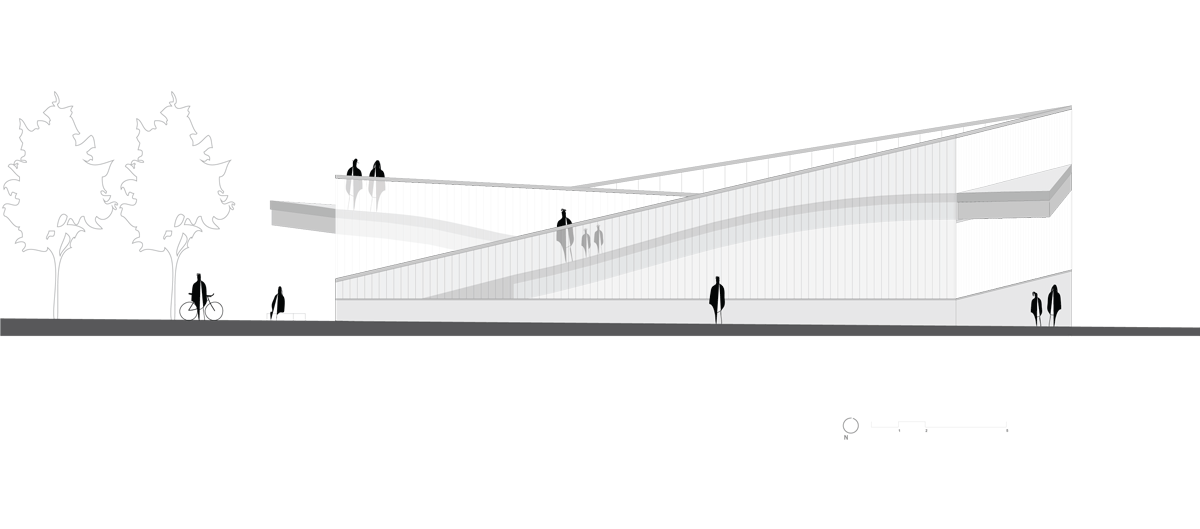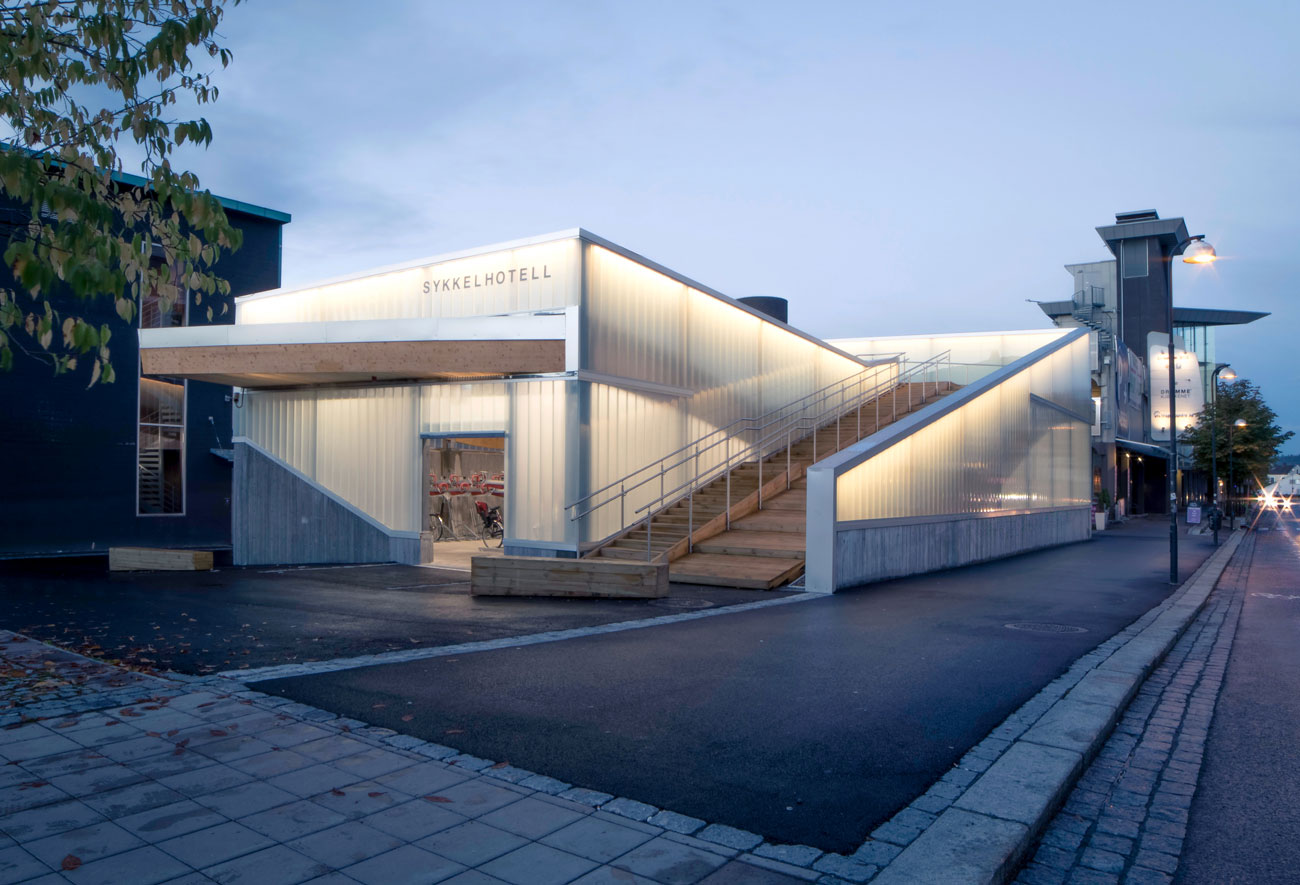Norway has set ambitious targets for an environmentally sustainable future. An increasing number of railway stations will now have a bicycle hotel to promote the use of bicycles. On Monday 10 October 2016 the Lillestrøm Bicycle Hotel opened in the city that has been frequently voted Norway’s best cycling city.
The project was designed by Various Architects AS, commissioned by ROM Eiendom AS and the Norwegian National Railways.
The design of the building focuses on making a positive contribution to the surroundings. The project gives back the area it occupies by providing a public green rooftop, which directly connects to the main square in front of the train station.
A free-form wooden roof resting on a glass box
The glass box consists of transparent glass walls and a playful concrete base that protects the building from the surrounding heavy traffic. The transparent glass walls allow natural light to filter through during the day and transform the building into a glowing box at night, providing a special visual experience. The mood of the building keeps changing from day to night.
The dynamic wooden roof that lays on top of the glass box slopes diagonally down to the west toward the train station plaza. This gesture provides an inviting public access to the top. The roof is outfitted with furnishing, vegetation, stairs and slopes, creating a unique experience with a panoramic view over Lillestrøm.
The glass walls continue above the roof, turning into the balustrade around the public area. At the same time, the roof penetrates through the walls to frame the entrance and to provide shelter against rain.
Together, the glass box and the roof create an intimate yet open and accessible public space.
The interior space focuses on the function of the building, using light and natural surfaces. The double-story bicycle rack becomes the main element in the space. The room height varies from 2.70 m to 6.00 m following the curvature of the roof.
Materials
The selection of materials was inspired by the surrounding context, including exposed and raw materials such as concrete, U-glass, steel, wood and green sedum:
Fair-faced concrete is used for internal floors and walls exposing the roughness of the material.
The glass walls are constructed using U-Glass profiles, which are self-supporting and require no metal profiles. The assembly of the glass walls leaves a small gap between each profile, generating a permeable element between the street and the bicycle parking. This provides a sense of safety to the users.
Wood is used for the roof surface, for the furnishings and as a structural material in the curved timber beams. Wood is chosen for its environmental qualities, in addition to the gentle interaction it provides with the public.
The trapezoidal metal sheets used for the roof structure are exposed to function as the interior ceiling. The raw silver surface allows the light to spread both inside and outside.
Green sedum covers part of the roof to absorb water and to bring nature into the public space. It also provides an extra layer of thermal insulation for the roof, thus protecting the building from cold in the winter and combating the heat in summer.
Plans
Elevations & Section
Structure
In consistence with the design concept and the material principle, the structure of the building is also exposed and honest. The timber beams are revealed in the interior to define the curvature of the roof. A collaborative design process with structural engineers resulted in a simple roof structure with repetitive beam shapes to reduce the cost. The shape of the roof is simplified into a single curved structure, with a diagonal slope to maintain its dynamic form and experience while providing for rain drainage. The wooden roof lays on thin steel columns, freeing up the roof to be perceived as a separate floating element.
Energy
The building has minimal energy consumption. During the day, no lighting is required since the glass walls allow for natural daylight. At night, the artificial lighting serves a two-fold function for the illumination of the interior and additional lighting to the surroundings. Natural crossed ventilation is possible through the gaps between the glass profiles, hence no additional ventilation is required.
The whole building glows at night, creating a unique spot for anyone to enjoy a moment on the green roof overlooking the city’s skyline.
